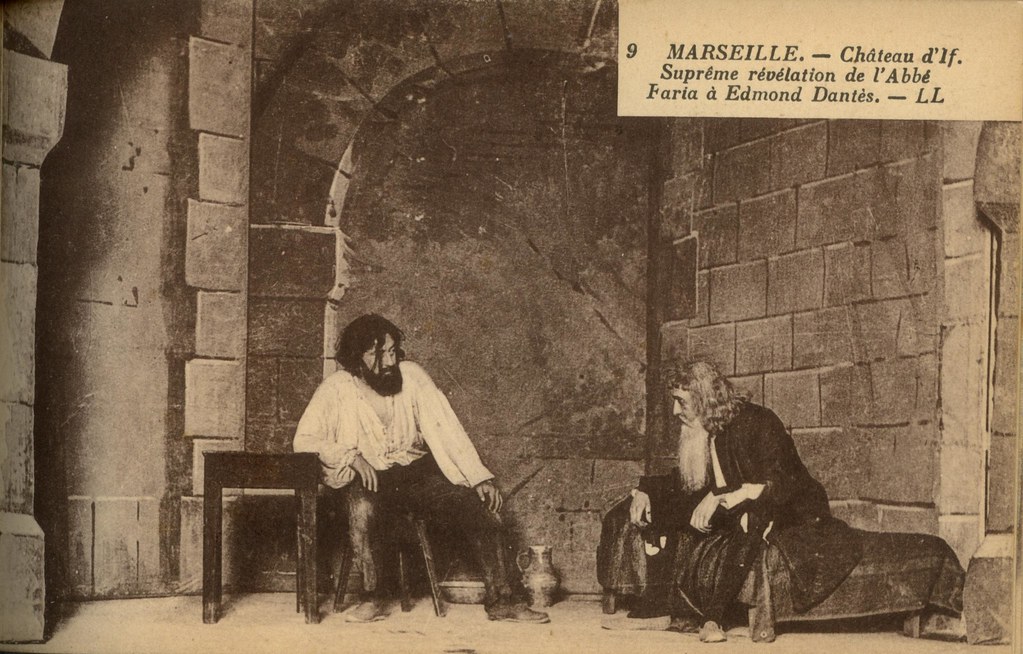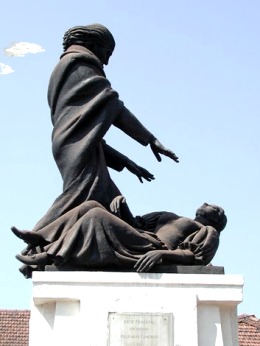Abbé Faria
José Custódio de Faria, known as Abbé Faria (* May 30, 1756 in Caldolim, Aldeia de Bardes / Goa, India, † September 20, 1819 in Paris, France), was a Portuguese priest, hypnotist and is considered one of the founder of Dynamic Psychiatry.
Besides Franz Anton Mesmer and the Marquis de Puysegur, he was one of the most important hypnotists or magnetists in the history of this discipline. Although today almost forgotten, many of his discoveries are still used today in hypnosis. Several authors used him as a literary figure.
Life
Faria was born in 1756 in the town of Bardes, in Goa, which then belonged to Portuguese India and was the seat of the Viceroy, was. His father was the priest and later a revolutionary against the domination of the continental Portuguese in India, Caetano Vitorino de Faria, his mother, who became a nun Rosa Maria de Sousa. Supposedly, the paternal family originates from the Brahmin Antü Shenoi.
In 1771 he came with his father for the first time to Europe to Lisbon and stayed there until 1772. Afterwards, he went to Rome to " Fidei propaganda Collegio there" to defend there on his Doctor of Theology and to finish his spiritual studies. In 1772, he returned as a priest back to Lisbon and stayed there until 1788.
1788, a year before the French Revolution, he went to Paris. In 1795 he was said to be allegedly involved in a rebellion against the National Convention. In France he used the long-standing friendship with the Marquis de Puysegur hypnotist. Between 1802 and 1811 he lived in Paris and led there by hypnotic experiments and cures. From 1811 to 1812 he was professor of philosophy at an academy in Marseille and was then demoted to Nimes. There they banned him from the therapeutic activity by the police. In 1813 he returned to Paris, where he lived until his death and was giving regular lectures on mesmerism and hypnotism.
Abbe Faria died on September 20, 1819 in Paris. 1945 was for him, in the then Portuguese Goa, a monument built.
Hypnotist
He was the first to found a connection between hypnosis and suggestion. Also, he is considered one of the founders of Dynamic Psychiatry. He is said to have the people always just shouted: " You're Sleeping", after fixing his palm, and then they had fallen into a trance. He spoke of the hypnotized who was actually on the hypnosis was due and not vice versa. After his terminology, especially women and hysterics were to influence most by hypnosis. The hypnotist he called the first time as Concentrateur, the hypnotized as Concentré and the state as a concentration. Also, he was probably the first person who worked with the so-called "post hypnotic suggestion ": A previously hypnotized done things that you had previously told him in hypnosis, even though he is already awake again. Faria has also himself as a Brahman (Sanskrit: Owner sacred knowledge, high priest of Hinduism ) called. His Indian birth allowed the hypnotist to deal with Indian mysticism and mythology and to incorporate some of it in his science and experiments.
Literary form in Dumas, Chateaubriand and Vernet
In the novel "The Count of Monte Cristo" (Le Comte de Monte-Cristo ), written in 1846 by Alexandre Dumas, he emerges as an Italian sage who helps the poor and innocent imprisoned Edmond Dantes by his treasure and his wisdom. François de Chateaubriand mentions him negatively in his " Memoires outretombe " (1849 ). The French painter and playwright Jules Vernet (1793-1843) processed the history of the Abbé in a one-act play in 1816 with the title: " Magnetismomanie - comedie, folie".
Work
* De la cause sommeil lucide, ou estude de la nature de la homme. (1819 ), Volume I.









